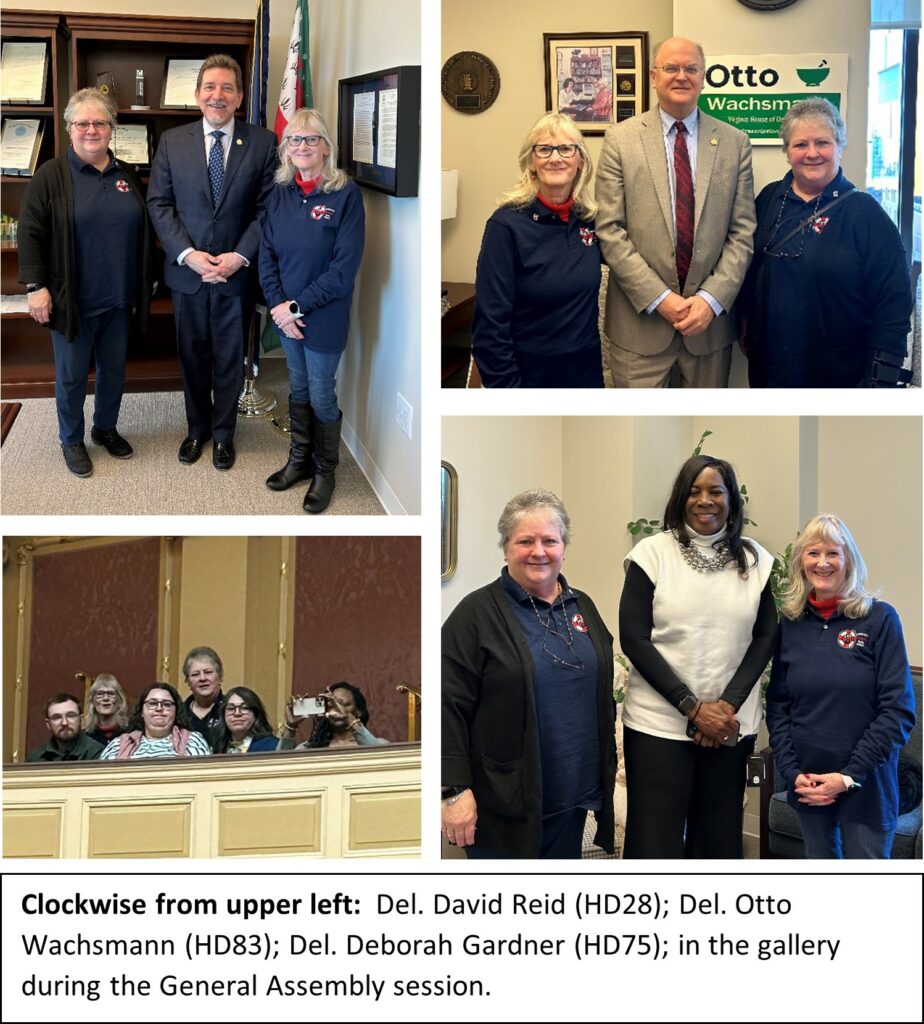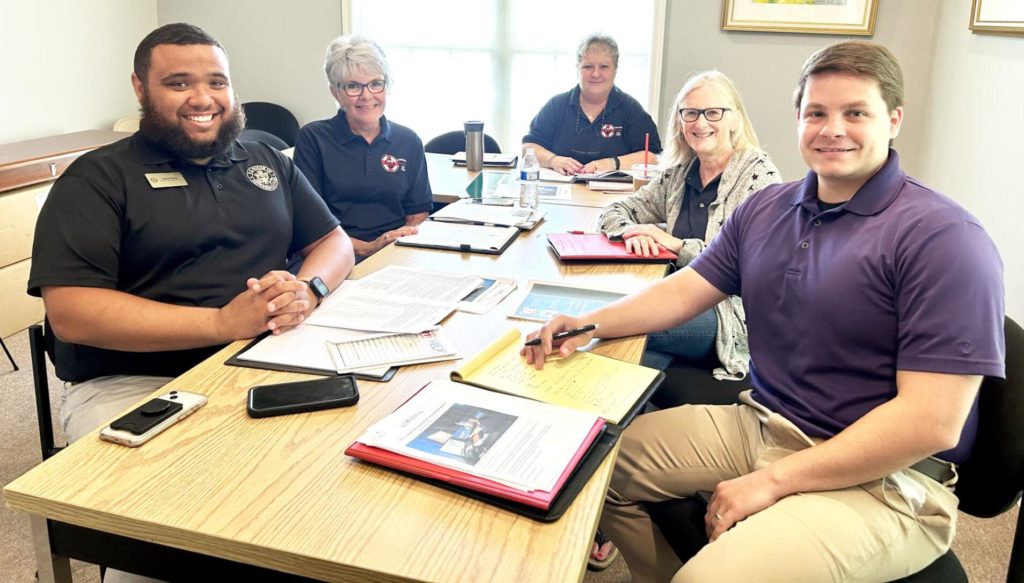To request a presentation, please email us at LKG911taskforce@gmail.com and we will contact you to schedule.
Resources
Track Federal Legislation
Legislative Search Results | Congress.gov | Library of Congress
Caucus Members — NG9-1-1 Institute NG911 Institute Next Generation 911
Find My Federal Senators and Representatives
Find Your Representative | house.gov
Track State Legislation
North Carolina
Bills & Laws – North Carolina General Assembly (ncleg.gov)
Virginia
Legislative Information System > 2023 Special Session I (virginia.gov)
Find Local Representatives
North Carolina
Board of Commissioners | Halifax County, NC (halifaxnc.com)
County Commissioner Information (northamptonnc.com)
County Commissioners | Warren County, NC (warrencountync.com)
Virginia
Board of Supervisors – Brunswick County, VA
Board of Supervisors | Mecklenburg County, VA (mecklenburgva.com)
News & Events

Executive Team Members Meet with Virginia Legislators
Executive Director Sherry Herzing and Board Chair Melissa Hartman traveled to Richmond, VA, on February 19, 2024, to the state capitol to meet with several legislators about the Task Force priorities. They met with three delegates from around the state including Delegates David Reid HD28, Otto Wachsmann HD83, and Deborah Gardner HD75. We are working on scheduling meetings with several state senators next to discuss the same issues. Del. Reid has been supportive of the Task Force since its
inception and he worked to get language in the 2020 special session I budget bill that created the Regional Advisory Committee (RAC) and subsequent publication of the E-911 Border Response Workgroup Report in April 2021. Herzing was an integral part of the initial standup of the RAC and creation of the report. Herzing and Hartman continue to participate in the RAC as citizen members helping to find solutions for the report findings and to be the citizen voices speaking for our first responders and telecommunicators.
This current meeting in Richmond was to discuss gaps that continue to exist in the 911 system, particularly in rural areas, where people are not getting the help they need – and sometimes they die. The “asks” of the legislators were for their support for legislation for the 2025 General Assembly to address some of the most urgent findings and recommendations from the report. The Task Force’s top priorities include adopting a state-wide centralized governance structure for PSAPs for consistency in capabilities and performance, reclassification of telecommunicators to first responders to address compensation, recruitment, retention, and training, and creating an education pipeline from middle school to high school to post graduate training for telecommunicators. The legislators were very interested in the Task Force’s work and support the priorities we discussed. Each Delegate presented different ideas for how we can work together to advance some of these initiatives.
Task Force Executive Members Meet with NC Legislators

The mission of the Lake Gaston 911 Task Force is to educate the public in order to help save lives and aid in improving the 911 operations in our rural areas. In support of that effort, Sherry Herzing (founder and executive director of the Task Force) and two members of the LKG 911 board of directors recently met with Trey Lewis and David Webb, the regional directors for North Carolina Senator Thom Tillis and Congressman Don Davis, respectively, to discuss issues impacting rural 911 systems…Read more
How You Can Help
Federal Level
Champion and support:
- 9-1-1 infrastructure upgrades including working broadband in all rural areas
- Integrate emergency response agencies, help ensure seamless communication/ cooperation.
- Support Congressional NextGen 9-1-1 Caucus
State Level
Champion and support:
- VDEM staffing and funding requirements to assist localities implementing NextGen 9-1-1 technology
- Reclassification of telecommunicators to first responders to address compensation, recruitment, retention, and training
Local and Municipal
Champion and support:
- Funding and resources to update PSAP technology and NextGen 9-1-1 implementation
- Build coalitions and partnerships for interjuristictional efficacy
- Build and support pipeline of trained first responders to address critical staffing needs
